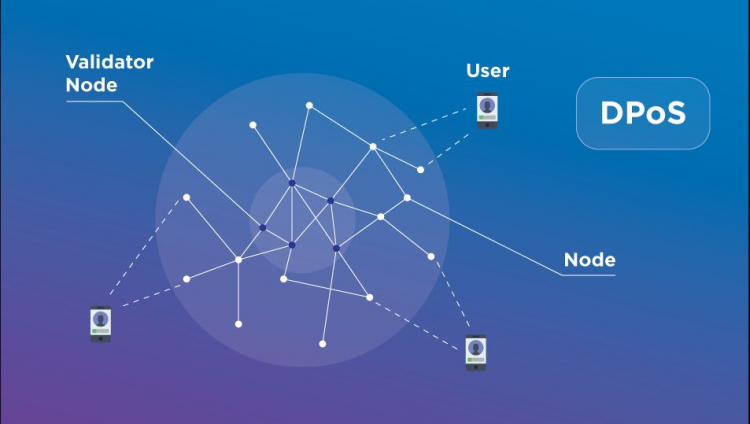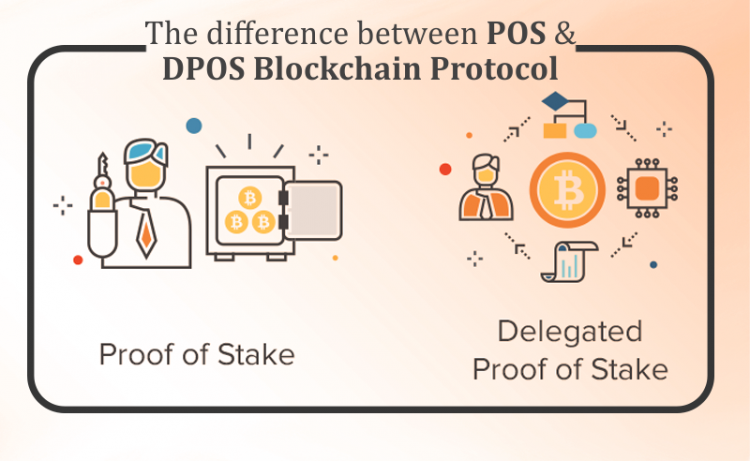Advertisement
DPoS is one of the blockchain consensus algorithms. In the article below, Ecoinomic.io will introduce this mechanism more closely.
Proof of Stake(PoS)?
The Proof-Of-Stake (PoS) mechanism was developed to address issues and limitations related to Proof-of-work (PoW) – especially in terms of the quality of resource use of cryptocurrency mining work on a large scale.
In the PoS mechanism, there is no mining activity at all. Instead, the confirmation of new Blocks on the Blockchain will take place based on the number of coins placed. The user locks a certain number of coins as a bet amount – and at a certain time, the user has the bet money randomly assigned authentication rights for the next new Block.
The greater the number of coins that users place bets on, the higher the chances of receiving authentication rights in each round. In addition to reducing the cost of computing when operating a blockchain, PoS systems make a nefarious attack much more difficult because it requires an attacker to have at least 51% of the total amount on the chain.
Delegated Proof Of Stake (DPoS)?
DPoS, also known as Proof of Authorization of Shares, was developed by Daniel Larimer in 2014. Bitshares, Steem, Ark, and Lisk are some of the cryptocurrency projects that use the DPoS consensus algorithm.
A blockchain using DPoS relies on a voting system in which shareholders delegate their tasks to third parties. In other words, they can elect a number of representatives to do the network security work on their behalf. These representatives can be called witnesses and they are responsible for reaching a consensus when creating and validating new blocks. Voting rights correspond to the number of coins per user. The voting system varies from project to project, but in general, each representative presents a separate proposal when requesting to receive votes. Typically, the rewards received by representatives are divided in proportion to those who voted for them.

Therefore, the DPoS algorithm creates a voting system that depends directly on the reputation of the representatives. If an elected node misbehaves or works inefficiently, that node is quickly expelled and replaced by another node.
In terms of performance, DPoS blockchains are more scalable and able to process more Transactions Per Second (TPS) than PoS.
Compare DPoS and PoS

Although PoS and DPoS are the same in that they use the same form of shares, DPoS has a more democratic form of voting, and thereby selects the creators of the blocks. Because the DPoS system is maintained by voters, elected representatives are motivated to work honestly and effectively or else be expelled. In addition, DPoS blockchains seem to process faster with a greater number of transactions per second than PoS blockchains.
Advantages of DPoS
The DPoS consensus mechanism significantly reduces the number of Nodes involved in verifying the validity of transactions. This makes it possible for the network to reach consensus in seconds, greatly improving the processing efficiency of the system, and solving the problem of scalability of blockchains, making it suitable for operating in the waking world.
In terms of governance capabilities, the DPoS consensus model has a clear governance structure when voting rights are limited to validator nodes. The model allows the network to make decisions more quickly than blockchains that run the PoS mechanism.
In addition, blockchains that launch DPoS mechanisms often have a limited number of validator nodes and do not require too strong a computer configuration, besides, delegators also do not need to turn on the computer 100%, only validators need to do so so the power consumption of the entire network is greatly reduced. Compared to pos networks or even PoW, blockchains have the lowest operating costs.
See also: What Are The Differences Between Investment And Speculation?
Limitations of DPoS
Delegated Proof of Stake (DPoS) works similarly to the company’s board system, allowing holders of the majority of power to delegate transaction verification work to competent professionals, while also sharing the rewards of participating in the production of new blocks.
This design has the limitation that they concentrate excessive power into a small number of validator nodes. If these nodes collude with each other, they can dominate the whole network. In addition, DPoS also causes nodes to reduce their enthusiasm for participating in network governance decisions.
















